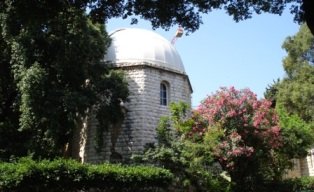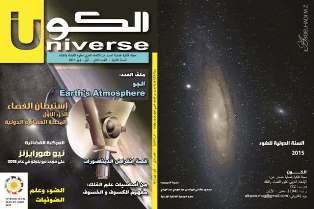Astronomy in Lebanon
Observatory:
Lee Observatory
 |
The Lee Observatory is a (now closed) astronomical observatory it was the first and the oldest of the Middle East in modern times. It is located in the campus of the American University of Beirut in Beirut, Lebanon.
History
The Lee observatory of the American University of Beirut, opened in 1873. Dr. Cornelius Van Dyck was its pioneer. The observatory was named the ‘Lee’ Observatory in reference to Henry Lee, a wealthy British merchant from Manchester, who made a significant donation to help finance its construction.
The Observatory had a twin role, sky gazing and a meteorological station for the middle east. Several directors and assistants managed the Observatory, among them:
Dr Van Dyck who had astronomy as a hobby bought most of the equipment from his own budget. Professor Mansour Jurdak and Professor Owen Gingerich with their concept of “Open Nights Observatory” made contributions to the Observatory library.
Saad Sami Haddad drew a sky map of stars up to and including the 5th magnitude. He contributed in the filing of sunspot data taken daily and forwarded them to Zurich, the International center for sunspot research. He made statistical tests revealing the significance of the East-West asymmetry of the sunspots activity. He was also responsible for the gathering of meteorological data.
Today
Nowadays the observatory has only an academic role.
University:
 |
Founded in 1866, the American University of Beirut bases its educational philosophy, standards, and practices on the American liberal arts model of higher education. A teaching-centered research university, AUB has around 800 instructional faculty and a student body of around 8,000 students. The University encourages freedom of thought and expression and seeks to graduate men and women committed to creative and critical thinking, life-long learning, personal integrity, civic responsibility, and leadership.
The University, which was granted institutional accreditation in June 2004 by the Commission on Higher Education of the Middle States Association of Colleges and Schools in the United States and reaffirmed in June 2009, includes six faculties: Agricultural and Food Sciences, Arts and Sciences, Engineering and Architecture, Health Sciences, Medicine (which includes the Rafic Hariri School of Nursing), and the Suliman S. Olayan School of Business.
AUB currently offers more than 120 programs leading to the bachelor’s, master’s, MD, and PhD degrees. The University became coeducational in 1922; its student body is 50 percent male and 50 percent female. The language of instruction is English (except for courses in the Arabic Department and other language courses).
The student faculty ratio is 11.2 to 1.
 AW-ROAD Just another WordPress site
AW-ROAD Just another WordPress site



